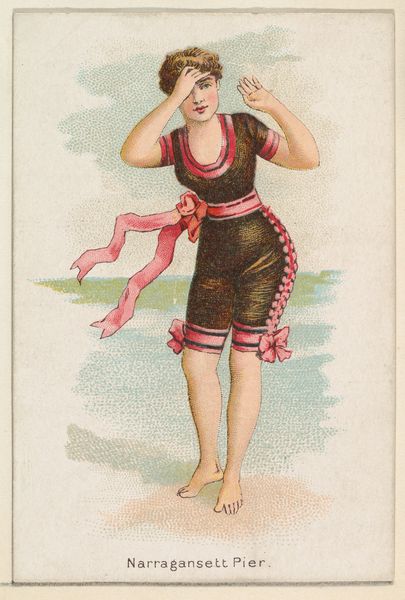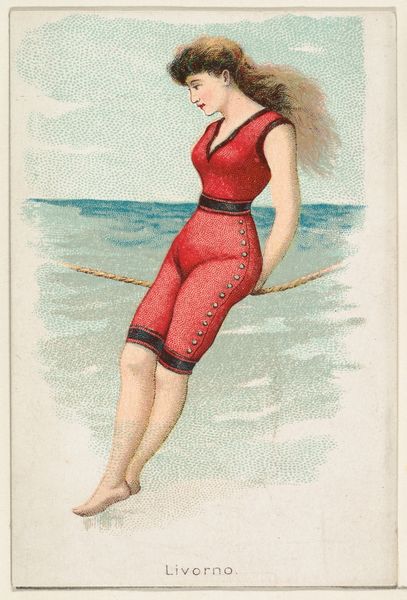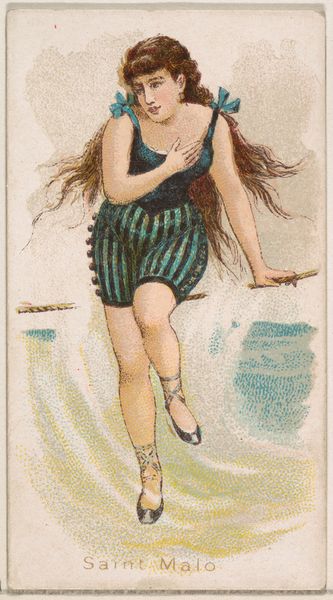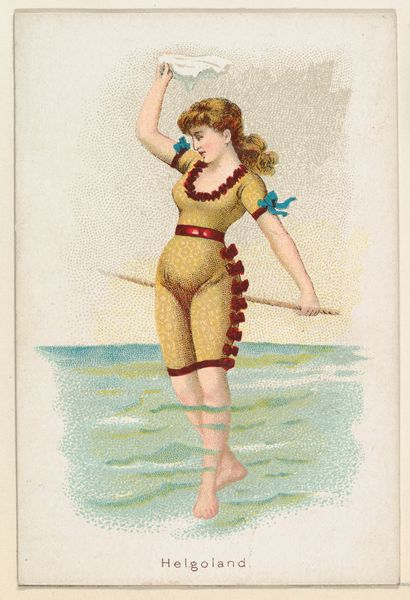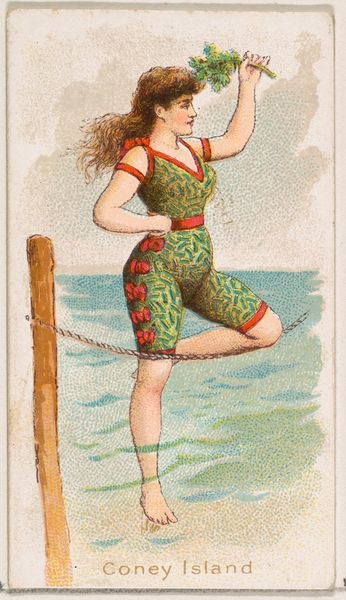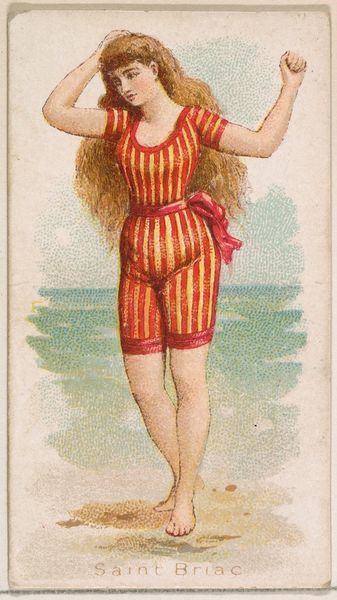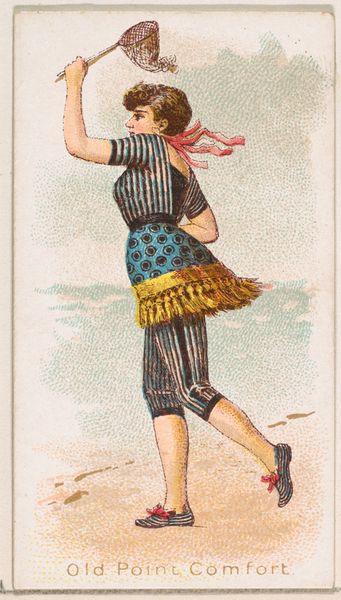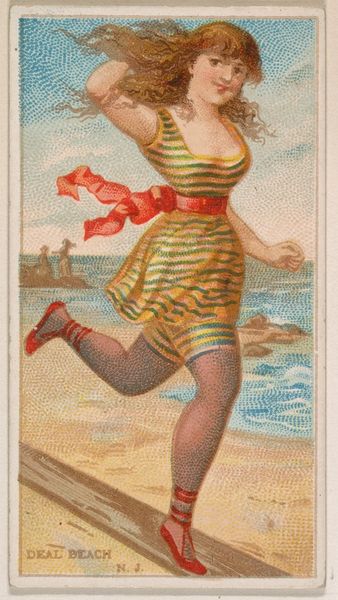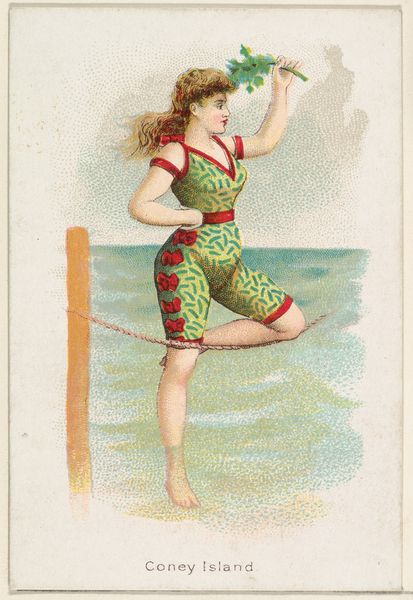
Parame, from the Beautiful Bathers series (N192) issued by Wm. S. Kimball & Co. 1889
0:00
0:00
drawing, coloured-pencil, print, photography
#
portrait
#
drawing
#
coloured-pencil
# print
#
impressionism
#
photography
#
coloured pencil
#
portrait drawing
#
watercolour illustration
#
genre-painting
Dimensions: Sheet: 3 3/4 × 2 1/2 in. (9.5 × 6.4 cm)
Copyright: Public Domain
Editor: This is "Parame, from the Beautiful Bathers series" by William S. Kimball & Co., made around 1889. It seems to be a colored pencil drawing, perhaps reproduced as a print. There's a striking contrast between the woman's fashionable, striped swimsuit and the more natural, impressionistic background. What's your interpretation of this piece, particularly considering its historical context? Curator: This piece offers a fascinating glimpse into the changing societal roles of women in the late 19th century. The "Beautiful Bathers" series itself can be read as a negotiation – even a subversion – of the Victorian ideal of feminine modesty. This wasn't just about representing beauty; it was about presenting women as active participants in public life, enjoying leisure. Editor: So, you see it as more than just a pretty picture? Curator: Absolutely. The choice of attire, for instance – the bathing suit, scandalous for some at the time – speaks to the growing, albeit contested, freedom women were claiming. And how is that freedom being framed? Who has access to this freedom? The bow on the bathing suit hints at class; this bathing suit signifies an aspirational status for consumers of Kimball & Co. products. Consider also the context of advertising – how are these images used to sell tobacco? Editor: That makes me think about the male gaze. Was this progress for women, or was it simply commodification through a different lens? Curator: Precisely. That tension is crucial. We must ask whose gaze this image caters to. While it seemingly celebrates female autonomy, it also undoubtedly capitalizes on the female form for commercial gain. How can we view such seemingly "progressive" depictions while questioning who gets to partake and who benefits from these narratives? Editor: I hadn’t considered the implications of advertising alongside shifting social norms. Thanks, that perspective really shifts my understanding of the work. Curator: And for me, it's rewarding to consider these layered narratives together. Art constantly calls us to re-evaluate established views, as well as acknowledge how little things change.
Comments
No comments
Be the first to comment and join the conversation on the ultimate creative platform.

